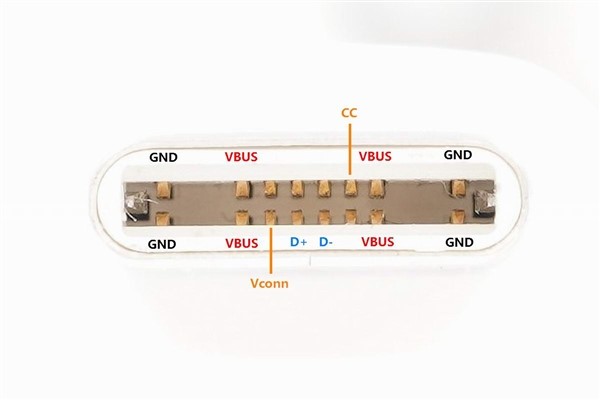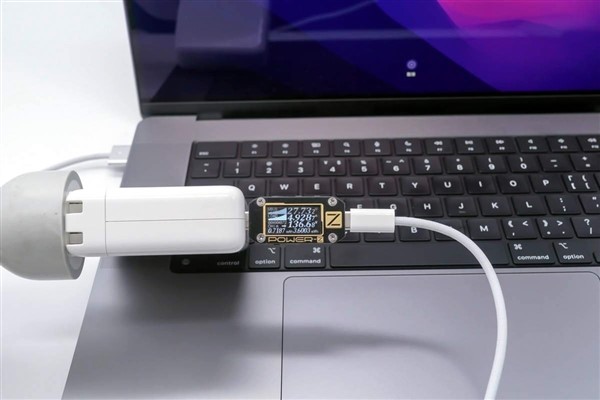Break through the one-hundred-watt ceiling! In order to charge faster, do you know how hard the data cable is?
The data cable is a key accessory for digital products to connect to chargers and computer equipment. The data cable is iteratively upgraded with the development of digital products. In the past, Mini USB and Micro USB have become the tears of the times. USB-C supports positive and negative plugging, high power, high speed, wide versatility, becoming the best interface between chargers and digital products. Among the digital accessories, the fastest growing fast charging performance is the mobile phone. The charging power has also developed from 5W to 120W. In the face of the increase in power, the data line is also facing unprecedented pressure.
E-Marker
The USB PD fast charge protocol is currently developed to PD3.1, but the most commonly used on the market is still PD3.0. The remarkable feature of the PD3.0 version is that it has a maximum power transmission capacity of 20V/5A and 100W. It is not only suitable for low-power mobile phones, tablets and other devices, but also widely used for high-power notebook computers, 100-watt mobile power supplies and other devices. With the popularization of USB PD fast charging technology, the importance of cables as a medium for power transmission between devices has gradually become prominent. Especially in the working state of high voltage and high current, not only the material and diameter of the wire are required, but also the E-Marker chip certified by the USB-IF Association (the cable with the E-Marker chip can support the maximum 5A current , the cable without E-Marker chip can only support the maximum current of 3A). A full-featured USB-C cable must be added to the E-Marker chip, because the E-Marker chip will pre-write the specifications of various cables, current carrying capacity, data transmission capacity and other parameters, and electronic equipment is also used by this chip. Obtain cable information to determine the power supply or data transmission mode to achieve the protection effect. The user cannot judge from the appearance whether the data cable can support 100W power transmission, and the E-Marker information can be read using the POWER-Z USB tester. If you want to get a fast charging performance higher than 60W, a 100W cable is necessary. Please read the product description clearly when you buy it. If you buy it wrong, the power will be limited and cannot exceed 60W.
Contact handling
The data line is connected to the device and the charger and relies on the contact shrapnel to contact each other for power transmission. The contact shrapnel of the ordinary data line does not have the ability to transmit large currents, and it is necessary to strengthen the contact shrapnel.

This is a macro image of the USB-C interface of a high-current data cable. You can see that the VBUS and GND shrapnel used to transmit power are much wider than the contacts used to transmit data. Widening the contact area makes the contact area larger and reduces the contact resistance, so that it can better support large current transmission. Manufacturers will even use a thicker gold plating process to further improve electrical performance.
Huawei, Xiaomi, Black Shark, OPPO and other Android brand fast charging systems use USB-A high-current interfaces. The charging head network takes their data lines and arranges them together. You can see that the outermost contacts are also widened. deal with. The contacts of these USB-A data cables for power transmission have even doubled their width. In addition to reducing contact resistance, they can also improve heat generation under high currents and quickly take away heat. In addition to widening the contacts, manufacturers such as Xiaomi, Black Shark, OPPO, OnePlus and other manufacturers also have a special shrapnel deep inside the USB-A, which is used to identify and send and receive information from the privatization protocol. It can even make the USB-A cable Also supports PD fast charge protocol.
Although the iPhone does not use the universal USB-C interface standard, Apple has also upgraded the data line contact process. The Lightning head of the Apple C94 data line is silver, not silver-plated, but the electroplating process has been upgraded from gold-plated to Rhodium ruthenium, the visual effect of the golden finger has changed from the previous gold to silver. Compared with the gold plating process, the rhodium-plated ruthenium process can more effectively prevent sweat, liquid, etc. from corroding the gold fingers of the contact, and it is durable.
Cable workmanship
Some data lines that support large currents will be directly marked with the words 5A and 6A in a conspicuous position to facilitate the user's identification. The data lines are used to transmit power and rely on internal cores. According to the laws of physics, the current transmission performance is proportional to the diameter of the wire. Under the same material and the same length, the thicker the wire has a lower resistance value, but you cannot blindly use a thicker wire.
Huawei once introduced a 40W low-voltage direct charge with a 5V8A ultra-high current architecture, which brought challenges to the data line. After dismantling the charging head network, it was found that Huawei used a stacking process on the cable, which barely maintained a not too blunt user experience under the premise of supporting a large current. In recent years, charge pump technology and series-connected batteries on mobile phones have been fully popularized. Most high-power fast charging uses boosted voltage to transmit power. The 5V/8A ultra-high current technology with extremely stringent data lines has entered the stage of history, which also means high power. Fast charging stops at 5A current.
Break through 100 watts
Apple brought a brand new MacBook Pro 2021 at the recent autumn new product launch conference. All products are equipped with MagSafe3 magnetic interface for charging. The actual charging power of the 16-inch MacBook Pro measured by the charging head network can reach 140W, and it is also compatible. USB-C lightning port charging.
As another indispensable accessory for the 16-inch MacBook Pro to achieve 140W fast charging, the USB-C to MagSafe3 cable included in the package is also worth mentioning. This is also the industry's first cable (decoy cable) that supports USB PD3.1 fast charging. It has been put on the Apple Store separately at a retail price of 340RMB. It seems to be a conventional "PD to DC" charging cable, but in fact, the USB PD3.1 fast charging protocol recognition and communication function has been added to the cable. When connected to a 140W USB-C charger and a 16-inch MacBook Pro, it can output 28V; the voltage charges the computer, and the cable can also select the correct charging voltage according to different PD chargers connected to it.
USB PD3.1 allows the PD fast charging system that has been limited to the upper limit of 20V/5A 100W for many years, breaking through the 100W ceiling in one fell swoop, and can support up to 28V/5A 140W, 48V/5A 240W, and USB PD3.1 boosted voltage becomes the future super.

Summary of charging head network
This issue of charging talks introduces what countermeasures the data cable has done in the face of high-power fast charging. The E-Marker chip provides a standard for the data cable. The 100-watt fast charging must be equipped with a 5A E-Marker chip. In terms of production, processes such as gold plating, rhodium-plated ruthenium, wide contacts, and thick cores provide protection for power transmission. Cotton cores, tensile fibers, and braided outer wires provide better feel and durability.
The power increase is either through high current or high voltage. The current cannot be increased blindly. It is limited by the ease of use of the cable, process difficulty, hand feel, cost and other issues, and the upper limit is mainly 5A current. Under the current mainstream USB PD3.0 standard, the power limit is 20V5A 100W. Apple’s first USB PD3.1 will stretch the fast charging power ceiling upwards. With the support of the new PD3.1 standard, the fast charging power can support 28V5A 140W, 48V5A 240W, two kinds of high-voltage and high-power transmission.
On the basis of not changing the wire interface and the thickness of the cable, fast charging can serve higher power devices, such as high-performance notebooks, workstations, and even power tools, battery cars, home appliances, etc., so that the beautiful vision of USB-C interface and cable being compatible with all products becomes feasible.


















View More(Total0)Comment Lists